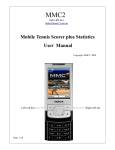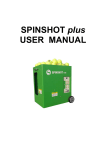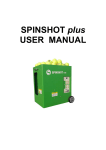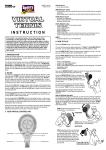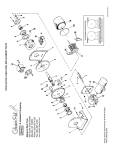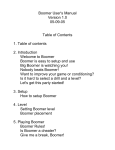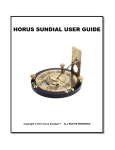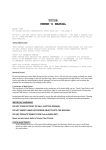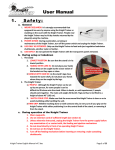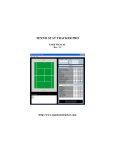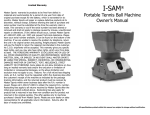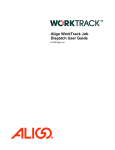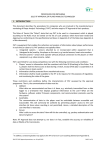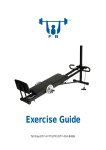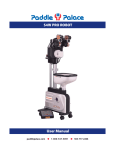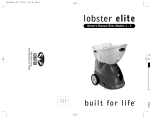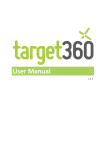Download USER MANUAL - Oncourt Offcourt
Transcript
USER MANUAL Congratulations on purchasing the Acurasee System. We know that you will find the system to be a fun and motivating tool to help you increase your tennis skills. In this manual, you will find information to help you take full advantage of what Acurasee has to offer. Happy hitting! TABLE OF CONTENTS Page 3 Development of the Acurasee System Page 4 Introduction to the Acurasee System Page 5 Page 9 Practice Drills with the Acurasee System Section A: Circular Target System Section B: Rectangular Target System Page 16 Charting Acurasee Results Page 18 Operating the System Page 22 Warranty Development of the Acurasee SyStem The Acurasee System was developed by an experienced tennis coach whose goal was to produce a practical and effective tennis training tool. This coach assembled an advisory group consisting of a nationally ranked player, experienced coaches, a sports psychologist and a professional knowledgeable in the area of training psychomotor skills. From this group came the guiding principles for the development of Acurasee: The training device should: • Provide immediate knowledge of results (feedback) • Provide for positive, interesting activities that motivate the player to improve • Provide players and coaches with a convenient method to provide repetitive practice of specific skills • Provide enhanced feedback that communicates shot accuracy with precision and objectivity • Provide a feedback system that rewards accuracy in any direction around a specific target spot • Provide coaches and players with an efficient method to obtain a precise, accurate and reliable summary of improvement across repeated practice sessions A lengthy period of field-testing and product modification led to continual improvements in the Acurasee System. The final version, either the Circular Target or the Rectangular Target, with electronic feedback and automatic point scoring, is the training device you have purchased. 3 INTRODUCTION of the Acurasee System The Acurasee System for training tennis players focuses on the single most important aspect of a tennis shot – LOCATION. While other attributes of a shot – such as speed (pace) and spin are important, where the ball lands on the court is the most important feature of the shot. Scientific research with the Acurasee System has empirically demonstrated its effectiveness as a training tool. Use of the Acurasee System in controlled research has shown it to be superior to typical training methods in improving the location of shots including: • Depth of all types of ground strokes • Hitting baseline corners • Hitting short angle shots • Down the line shots • Drop shots • Serves The Acurasee System achieves superior results as a training tool because it maximizes the effectiveness of the three major factors known to enhance the acquisition of psychomotor skills. These three factors... ➊ feedback, ➋ motivation and ➌ number of practice trials – are heightened whenever the Acurasee System is employed. ➊ Feedback Fast and accurate feedback is an essential component for learning any complex psychomotor skill. When feedback is delayed – or even worse, inaccurate – the value of a learning trial is diminished. The enormous value of immediate, accurate feedback was a major driving principle that led to the development of Acurasee. ➋ Motivation Research demonstrates that the acquisition of motor skills is accelerated when the participants are interested, focused and eager to improve their skill. This complex of variables – motivation – is essential to acquiring new skills. The relationship of motivation to skill acquisition can be represented by the relationship: SKILL ACQUISITION = PRACTICE TRIALS x MOTIVATION x ACCURATE FEEDBACK. 4 ➌ Practice Trials Research and clinical experience has demonstrated that the key to excellence in any activity is practice. Even the most naturally gifted athletes must practice diligently to achieve mastery of their skills. Tennis, perhaps even more than most other sports, demands extraordinary amounts of practice in order for participants to achieve high levels of skill. The Acurasee System was specifically designed to provide fast and accurate feedback regarding ball placement (location). The target design, with lights and sounds as feedback for accurate shots, serves to motivate the player to achieve positive results with each shot. Players find the feedback to be rewarding (reinforcing their behavior) and therefore are willing to engage in long stretches of motivated practice. By creating an accurate positive feedback system the Acurasee system will lead to rapid improvement in your player’s ability to hit specific locations with their shots. PRACTICE DRILLS WITH the Acurasee System If you purchased the Acurasee Circular Target System, please refer to Section A. If you purchased the Acurasee Rectangular Target System, please refer to Section B. SECTION A: Circular target system Use of the Acurasee Circular Target System encourages players and coaches to think about the most important element in tennis – where will the shot hit the court. The Circular Target System encourages players to have a specific shot location in mind whenever they hit a stroke. The Circular Target System is particularly useful to train players in skill areas such as: • Hitting forehands, backhands, and volleys deep in the corners of the court (cross- court or down the line) • Hitting sharp angled shots • Hitting drop shots • Hitting serves to various locations in the service box Since the Acurasee Circular Target is a portable device, the target can be moved to 5 any court location desired. This enables practice in hitting to any specific location on the court. The Circular Target System enhances drills for both players and instructors. Due to the automatic, accurate feedback provided by the circular target system, the coach can focus on how balls are fed and the players’ form in hitting shots. The player can focus on shot production knowing that automatic feedback will be forthcoming. Drills One of the basic shots in tennis is the crosscourt forehand. By placing the Acurasee Circular Target with the center of the target on the desired court contact location, the player is taught to hit to a specific court location as opposed to simply hitting crosscourt. See Figure 1 below: crosscourt forehand Player Intended aim point is the center of the bull’s-eye. Instructor Figure 1 6 The use of two Acurasee Circular Targets provides opportunities for advanced drills. For example, players can be encouraged to alternate between down the line shots and sharp angles as depicted in Figure 2: down the line / sharp angle Player Instructor Figure 2 In this example the player is told to alternate between backhands deep down the line and backhands hit at a sharp angle. The ability to hit either of these court locations with the backhand is highly accelerated by the circular target’s capability to motivate, provide precise, immediate feedback, and encourage more practice trials. The variety of drills enhanced by the use of the Acurasee Circular Target is unlimited. Here are a few suggestions regarding drills based from our extensive experience. ➊Encourage players to return to a central court position after each shot with proper speed and footwork. This will best mimic actual match conditions. 7 ➋Do not allow players to alter their pace or form in an attempt to achieve greater accuracy. Insist that they hit with the pace and form you want to see in match play. ➌Devote part of each drill session to a standard drill that can be replicated each session for the purpose of monitoring progress. Record scores under this standard condition and chart the results over time (refer to the section on charting Acurasee results). Players enjoy seeing written records of their progress. ➍When players achieve a high level of accuracy (for example, hitting the 9.5 foot Acurasee circular target 22 times out of 100) consider increasing difficulty by altering the ball feeding method and/or target location (such as sharper angles, deeper in the court). For advanced players the use of the 8 foot or 6 foot Acurasee circular target is recommended. ➎Post the top 5 scores for different types of shots. Allow a player to appear on the “top 5” list only once for each type of shot so one player’s name doesn’t dominate your lists. ➏Provide rewards for categories such as the top score each day and the most improved score. When advanced players achieve a high degree of accuracy the bull’s-eye (aim point) of the 9.5 foot Circular Target may be located too far from desired shot locations. At this point in skill development, it is recommended to switch to using either the 8 foot or 6 foot Acurasee Circular Target. Use of the smaller target enables the aim point to become closer to the lines on the tennis court. This will enable the advanced player to develop skills for hitting sharper angles and deeper shots. The 6-foot Acurasee Circular Target is particularly well suited as a training device to develop placement accuracy for serves. Figure 3 (on the following page) illustrates placement of the 6-foot target to teach a right-handed player to pull the service returner off the court when serving from the deuce side. The Acurasee System is designed to promote the development of tennis skills by incorporating basic principles that support the learning of psychomotor skills. However, there is no substitute for proper coaching. We encourage players seeking advanced skills to use Acurasee System in conjunction with guidance from professional tennis instructors. We are confident that the use of the system by professional instructors will enable them to devote more of their valuable time to the direct instruction of their students. 8 SERVING FROM THE DEUCE SIDE Player Figure 3 SECTION B: REctangular target system Use of the Acurasee Rectangular Target System encourages players and coaches to think about the most important element in tennis – where will the shot hit the court. The Rectangular Target System encourages players to have a specific shot location in mind whenever they hit a stroke. The Rectangular Target System is particularly useful to train players in skill areas such as: • Hitting serves deep in the service box • Hitting serves close to the sidelines • Hitting serves close to the service box “T” • Hitting forehands, backhands, and volleys “down the line” • Hitting deep shots near the baseline • Hitting angled crosscourt shots close to the line • Hitting drop shots to designated locations 9 Since the Rectangular Target is a portable device, the target can be moved to any court location desired. This enables practice in hitting to any specific location on the court. The system enhances drills for both players and instructors. Due to the automatic, accurate feedback provided by Acurasee Rectangular Target System, the coach can focus on how balls are fed and the players’ form in hitting shots. The player can focus on shot production knowing that automatic feedback will be forthcoming. Drills An example of a drill using the Acurasee Rectangular Target System to train players to hit serves deep in the service box is shown in Figure 4. In this example, the player is of moderate ability, so the Rectangular Target is placed well within the “out” line. This teaches the player to hit deep while minimizing balls hit too deep. As the player’s ability to serve to locations improves, the coach would move the target deeper into the service box. deep serves Player Target placement for deep serves Figure 4 10 The Acurasee Rectangular Target System is also highly effective in training players to hit serves down the middle, also known as down the “T”. The use of two Acurasee Rectangular Targets can be used to alternate between deep service line serves and down the middle serves. See Figure 5: deep service line serves / down the middle serves Player Target placement for down the middle serves Target placement for deep serves Figure 5 11 Figure 6 shows the placement of two Acurasee Rectangular Target to develop a right-handed player’s accuracy in hitting down the line backhands. In this instance it is an advanced player so two Rectangular Target are placed with their outer edge covering the line. down the line backhands Player Rectangular Target One Rectangular Target Two Figure 6 12 Outer edge of target covers the side-line The Acurasee Rectangular Target System is ideally suited to improve a player’s ability to hit the ball deep. The use of two rectangular targets will cover the entire length of the baseline. The target depth should be moved closer and closer to the baseline as the player’s skills improve. See Figure 7: hitting deep balls Player Figure 7 13 The Acurasee Rectangular Target, when combined with the Acurasee Circular Target can be used in a wide variety of drills to teach players to hit specific court locations. One example of a combination drill is shown in Figure 8. In this drill, the player is taught to hit either down the line or crosscourt from the same hitting location while disguising their target location. The coach, observing from across the player, can concentrate and comment on stroke form and quality of the disguise while the Acurasee Circular Target and Acurasee Rectangular Target automatically record results. COMBINATION CROSScourt / down the line backhands Player Two Rectangular targets for downthe-line backhands Circular target for crosscourt backhand Instructor Figure 8 14 The variety of drills enhanced by the use of Acurasee Rectangular Target System is unlimited. Here are a few suggestions regarding drills based from our extensive experience with the system. • Encourage players to return to a central court position after each shot with proper speed and footwork. This will best mimic actual match conditions. • Do not allow players to alter their pace or form in an attempt to achieve greater accuracy. Insist that they hit with the pace and form you want to see in match play. • Devote part of each drill session to a standard drill that can be replicated each session for the purpose of monitoring progress. Record scores under this standard condition and chart the results over time (refer to the section on charting Acurasee results). Players enjoy seeing written records of their progress. • When players achieve a high level of accuracy, consider increasing difficulty by altering the ball feeding method and/or target location (such as closer to the sideline, deeper in the court, etc.). • Post the top 5 scores for different types of shots. Allow a player to appear on the top 5 list only once for each type of shot so one player’s name doesn’t dominate the lists. • Provide rewards for categories such as the top score each day and the most improved score. The Acurasee System is designed to promote the development of tennis skills by incorporating basic principles that support the learning of psychomotor skills. However, there is no substitute for proper coaching. We encourage players seeking advanced skills to use the system in conjunction with guidance from professional tennis instructors. We are confident that the use of the Acurasee System by professional instructors will enable them to devote more of their valuable time to the direct instruction of their students. 15 CHARTING ACURASEE RESULTS Another advantage of the Acurasee System is its capability to produce data that can be used to monitor progress in a reliable manner. This enables the preparation of written records and charts to monitor the progress of a player. For an example, see the chart below: Amy’s Acurasee Rating for 100 Crosscourt Forehands 50 Acurasee Rating 40 30 20 Accurasee Rating 10 0 1 2 3 4 5 6 7 8 9 Day *Note that with the Acurasee rating system and excellent shot can score more than one “point.” (See the section on operating the system). 16 In order for any progress chart to be reliable and valid, it is important to do the drill under similar conditions each day. Key variables include: • How the balls are fed • Court conditions (wind, temperature, etc.) • Player stroke production. When charting progress, the Acurasee Target should be placed in the exact same location each day. The instructor can feed balls at the same difficulty level and the player reminded to try and achieve accuracy using their best form and a consistent pace. If practice sessions are indoors this adds another dimension of reliable measurement by minimizing the influence of court conditions. If drills are being done outdoors, results on days with highly unusual conditions (extremely windy, cold, etc.) should not be compared to normal condition days, since player performance will probably be unduly influenced by conditions. The Acurasee System should be used on unusual weather days, however, as a precise and reliable means of demonstrating to players how to adjust their shots to the unusual conditions. Note that players can generate highly reliable progress charts by using the Acurasee system with a ball machine or in practicing serves. 17 OPERATING THE SYSTEM ➊ TARGETS ➂ points ➀ points ➁ points ➂ points Diagram A ➃ points ➋ Scoreboard acurasee.com Diagram C ➌ TRANSMITTER Diagram D 18 ➃ points Diagram B A B C To begin plaY Unroll target and place onto the desired location of the tennis court. For best D results, brush the target flat against the court if there are any areas of the target that are rising up from the flat surface of the court. Plug wire number 1 from the target into the outlet number 1 of the transmitter. Plug wire number 2 from the target into the outlet number 2 of the transmitter. Plug wire number 3 from the target into the outlet number 3 of the transmitter. Set the channel mode on the transmitter to channel 1 or 2. If there is a user of the Acurasee System on the court next to you, set your channel to be different from the court next to you so that their target hits will not register a score on your scoreboard. Position the scoreboard in a spot where the player can view the flashing light feedback and also where the scoreboard will not be in the way of the player’s practice session. See Diagram E. Target Scoreboard Player Diagram E 19 Diagram F 1 2 3 4 5 On the side of the scoreboard, switch number 1 (Diagram F) is the channel switch. Set the channel mode of the scoreboard to match the channel mode, which you set on the transmitter. On the side of the scoreboard, switch number 5 (Diagram F) is the power switch. Turn this switch to the ON position. There are five levels of volume. The volume can be adjusted higher with the button labeled 3, and lower with the button labeled 4. The speaker can be turned off by pressing the button labeled 4 until the volume is past the lowest level. The speaker can be turned on by pressing the button labeled 3. If the speaker is on, you will hear one of four distinct sounds each time one of the four areas of the circular target is hit. You will also hear the expression “scorchin” at random times when the target is hit. You will also hear one of two distinctive sounds each time on of the areas of the rectangular target is hit. A total point announcement will also be broadcast when you reach a total point score of 10, 20, 30, 40, 50, 60, 70, 80, 90, 100, 150, and 200 points. See section 3 below for explanation on the point system. To activate the flashing light feature, press the switch labeled 2 (diagram F), LED power switch, and hold it pressed for greater than one second. This will activate one flashing light when a one-point area of the target is hit, two flashing lights when a two-point area of the target is hit, three flashing lights when a three-point area of the target is hit, and all four flashing lights when a four-point area of the target is hit. See section 3 below for explanation on the point system. To turn the flashing light feedback feature off, press the switch labeled 2 (diagram F), LED power switch, and hold it pressed for greater than one second. 20 Point explanation ➊ Circular Target: A player is given 4 points for hitting the center circle, or bulls- eye, of the circular target. A player is given 3 points for hitting the ring that directly surrounds the bulls-eye, 2 points for hitting the next outer ring, which is two rings over from the bulls-eye, and 1 point for hitting the most outer ring. ➋ Rectangular Target: A player is given 4 points for hitting the center strip of the rectangular target, and 3 points for hitting either of the two outer strips of the rectangular target. ➌ The lower corner of the scoreboard will alternately display both the point total and the number of times each target section has been hit. If the LED power button (Diagram F, switch 4) is pressed and not held, the score display will light up for a period of five seconds for easier viewing. ➍ Reset the score: The score is reset by turning the power off and then on again (Diagram F, switch 1). ➎ Recharging: The charger light will display red when the scoreboard unit is charging. A green light will display when the scoreboard unit is fully charged. The target and transmitter do not need to be charged. The transmitter uses one standard 9 volt replaceable battery. ➏ Care for the Acurasee system: Your Acurasee system will last for many years if cared for properly. • Do not jump on the target. • Remove the target, scoreboard, and transmitter immediately from the court in the event of rain, or the threat of rain. ➐ Portability of the Acurasee target: Please refer to diagram G for folding and carrying instructions for the circular target. Refer to diagram H for instructions for the circular target. Refer to Diagram G for instructions for the rectangular target. 21 Diagram G – Circular Target Fold target mat in half so the self-stick strips are on the outside as shown. With the mat folded, roll the bottom of the mat toward the carrying strap. Secure the self-stick strips near the carrying strap to the self-stick strips on the underside of the mat. Diagram H – Rectangular Target Lay target mat flat so the self-stick strips are face up as shown. With the mat folded, roll the bottom of the mat toward the carrying strap. Secure the self-stick strips near the carrying strap to the self-stick strips on the underside of the mat. Acurasee limited warranty What does this warranty cover? This warranty covers and defects or malfunctions in your new Acurasee product. How long does the coverage last? This warranty lasts for 60 days from the date of purchase. Coverage terminates if you sell or otherwise transfer the Acurasee product. What will Acurasee do? Acurasee will replace any defective or malfunctioning part at no charge. You must pay any labor charges. 22 What does this warranty not cover? Batteries, or any problem that is caused by abuse, misuse, or an act of God (such as a flood) are not covered. Also, consequential and incidental damages are not recoverable under this warranty. Some states do not allow the exclusion or limitation of incidental or consequential damages, so the above limitation or exclusion may not apply to you. How do you get service? ➊First call Acurasee at 888-291-6344 between the hours of 9 AM and 5 PM USA EST. for troubleshooting help in English. Or email us at acurasee.com/troubleshoot. ➋If our troubleshooting department is unable to solve the problem, and if your purchase is still registered under our 60-day warranty, go to acurasee.com/returns for information on where to send your Acurasee product for inspection. We will inspect your product and contact you within one week of receiving it to give you the results of our inspection and an estimate of the labor charges required to repair the product. If you authorize repairs, we will ship a repaired or replaced product to you using C.O.D. shipping, where you will be required to pay the repair charges. There is no charge for inspection. How do you register your purchase to be covered under warranty? Option 1: Go to acurasee.com/warranty and submit the following information: ➊ Your Name ➋ Your Street Address ➌ Your City, State, and Zip Code ➍ Your Country ➎ Date of Purchase ➏ Scan and attach a copy of your purchase receipt showing: • Date of purchase • Name of Address and location where purchase was made. Option 2: Repeat steps 1–6 above then mail the information to Acurasee at: 302 E. Ohmer Rd. Mayville, MI 48744 If residing outside of the USA, please visit acurasee.com/warranty for the address to mail your warranty registration. 23 24

























